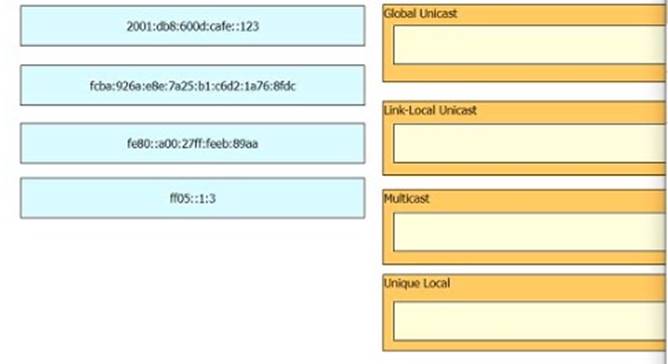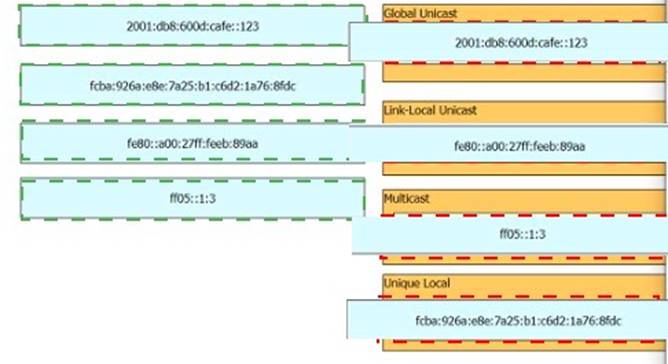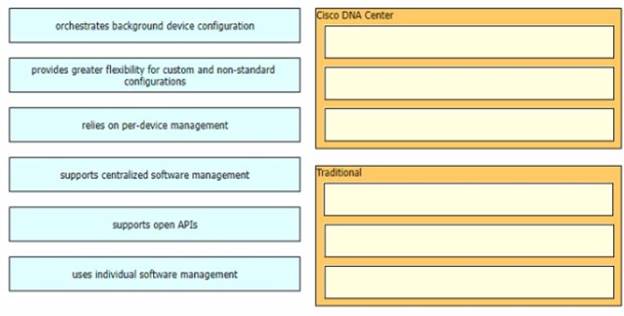- (Topic 3)
Which QoS traffic handling technique retains excess packets in a queue and reschedules these packets for later transmission when the configured maximum bandwidth has been surpassed?
Correct Answer:
C
DRAG DROP - (Topic 4)
Solution:
Does this meet the goal?
Correct Answer:
A
DRAG DROP - (Topic 4)
Drag and drop the characteristics of device-management technologies from the left onto the corresponding deployment types on the right.
Solution:
Does this meet the goal?
Correct Answer:
A
- (Topic 4)
What are two differences between WPA2 and WPA3 wireless security? (Choose two.)
Correct Answer:
CE
- (Topic 1)
When configuring IPv6 on an interface, which two IPv6 multicast groups are joined? (Choose two)
Correct Answer:
DE
Reference:
https://www.cisco.com/c/en/us/td/docs/ios-xml/ios/ipv6/configuration/xe-3s/ipv6-xe-36s-book/ip6-multicast.html
When an interface is configured with IPv6 address, it automatically joins the all nodes (FF02::1) and solicited-node (FF02::1:FFxx:xxxx) multicast groups. The all-node group is used to communicate with all interfaces on the local link, and the solicited-nodes multicast group is required for link-layer address resolution. Routers also join a third multicast group, the all-routers group (FF02::2).